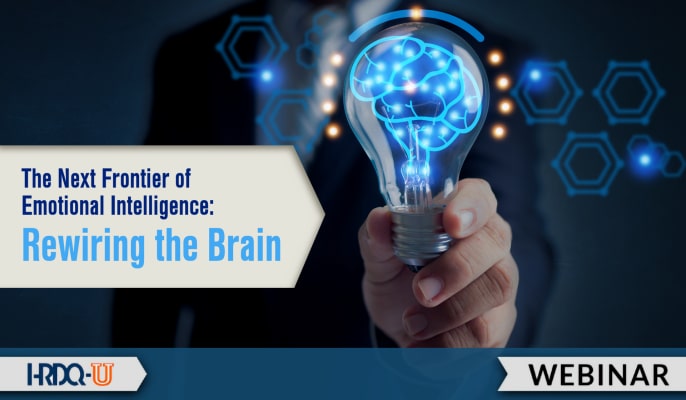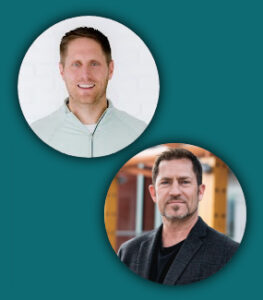
The lack of emotional intelligence (EI) is one of the biggest derailers of leadership and employee effectiveness (and a common headache for HR leaders). Thus, emotional intelligence development is commonly a top priority in organizations.
Unfortunately, traditional emotional intelligence development efforts fall short of moving the needle on EI. This is because EI is commonly treated as a skill-based ability rather than what neuroscience is finding: EI is actually a neural-based ability. When EI is viewed as a neural-based ability, we can better diagnose EI deficiencies and treat them in a manner that actually results in the improvement of EI.
In an insightful and engaging session, Mike and Ryan are going to discuss the next frontier of EI thought leadership and development (the neuroscience behind EI) and help you make meaningful improvements in EI within your organization.
RyanGottfredson.com is pleased to offer a special discount for HRDQ-U webinar viewers who wish to further explore the concepts of mental wellness for leaders.
Burnout and depression among leaders are having major effects on organizations everywhere. When leaders are unwell, companies falter. Ryan Gottfredson and Mike Skrypnek can deliver their proprietary leadership workshop, Elevate the Mental Wellness of Your Leaders, directly to you.
Ryan Gottfredson, Ph.D., is a cutting-edge leadership development author, researcher, and consultant. He helps organizations vertically develop their leaders primarily through a focus on mindsets. Ryan is the Wall Street Journal and USA Today best-selling author of Success Mindsets: The Key to Unlocking Greater Success in Your Life, Work, & Leadership. He is the author of the upcoming book, The Elevated Leader: Level Up Your Leadership Through Vertical Development. He is also a leadership professor at the College of Business and Economics at California State University-Fullerton.
Connect with Ryan on Twitter, Facebook, and at ryangottfredson.com
Mike Skrypnek is a catalyst that ignites your passion to help you make a cosmic ripple. His role as a multiplier of entrepreneurial success extends through generations. Mike is an international bestseller of nine books, including his most important and soon-to-be available, UNLimited WORTH. He is a keynote speaker and sought-after business strategist who has shared his insights and wisdom with thousands of passionate, purpose-driven entrepreneurs, business leaders, and executives. His coaching focuses on purpose at the intersection of personal, professional, and philanthropic development.
Mike lives, loves, and adventures with his wife and their two young adult children in the beautiful Sea-to-Sky corridor of British Columbia, Canada. Please welcome the CEO of Grow Get Give Coaching and Founder of The UNLimited WORTH Project.
Connect with Mike on Facebook and at mikeskrypnek.com

Ryan Gottfredson
Leadership training is a $366 billion global industry. Despite that, 75% of organizations say their leadership development programs are not very effective. A primary reason for the lack of development effectiveness is because they almost solely focus on horizontal development (think “tooling up” one’s talent) instead of vertical development (think “leveling up” one’s character). Ryan Gottfredson helps organizations vertically develop their leaders so that they can lead and operate from a higher, more effective level.
Learn more at ryangottfredson.com
Mike Skrypnek
Mike is a strategist helping entrepreneurs & industry leaders find their happiness, calm & love, so they can share their wisdom & wealth to amplify entrepreneurial success.
Leaders moved to action set off a strategic & powerful cascade of impact. The multiplier effect is profound. In fact, it extends through generations, creating a cosmic ripple. Mike is the catalyst for this action.
Learn more at mikeskrypnek.com
Training Tools for Developing Great People Skills
This event is sponsored by HRDQ. For 45 years HRDQ has provided research-based, off-the-shelf soft-skills training resources for classroom, virtual, and online training. From assessments and workshops to experiential hands-on games, HRDQ helps organizations improve performance, increase job satisfaction, and more.
Learn more at HRDQstore.com

Sign up for more as a member of HRDQ-U
HRDQ-U offers much of its learning content free to visitors, including live and select webinars, blog posts, and more, with new events and posts shared every week. However, there is much more learning available. You can access our complete library of on-demand webinars and other training events and content by simply signing up.